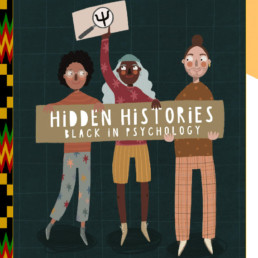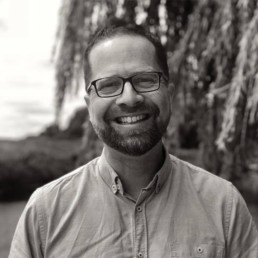Extending our welcome, transforming our schools

Written by Artemi Sakellariadis
(she, her) Director, Centre for Studies on Inclusive Education (CSIE)
Introduction:
Artemi Sakellariadis’ contribution to Diverse Educators: A Manifesto is a detailed look at disability in education, drawn from her substantial experience in working with CSIE. In her sub-chapter, she cited guidance from CSIE that was edited for brevity. Following discussions with Artemi, we have decided to publish the original version of the text, with the edits removed, to ensure that the full meaning of the guidance is clear and evident.
“Any fool can know. The point is to understand.” Albert Einstein
This chapter is a call to transform schools on the grounds of human rights. It invites us to reflect on how we treat disabled people and explores:
- inconsistencies in the implementation of law and policy
- established practices which are incompatible with disabled children’s rights
- perceptions of disability and the impact of stereotypes on children’s life chances.
National laws
The Human Rights Act 1998 brings the European Convention on Human Rights into UK law and asserts people’s fundamental rights and freedoms. It lists 16 basic rights, including the right to an effective education, and specifies that all rights must be secured without discrimination.
The Equality Act 2010 protects people from unfair treatment with regard to nine protected characteristics, including disability. It also places a duty on all public service providers, including schools, to make reasonable adjustments in response to people’s impairments, for equality of opportunity (UK Government 2010). This is an anticipatory duty: organisations must not wait until a disabled person arrives, before transforming their cultures, policies and practices. The aim is to ensure no disabled person misses out or is disadvantaged.
Part III of the Children and Families Act 2014 concerns the education of children and young people identified as having special educational needs or disabilities (SEND). It confirms every child’s right to a mainstream education, as long as this is consistent with their parents’ wishes, the efficient education of other children, the efficient use of resources, and that the education offered is appropriate to the child’s needs. The last three conditions are often cited as reasons why a child cannot be included in a particular school, even though these issues largely depend on the way teaching and learning are organised in school.
The SEND Code of Practice explicitly states in paragraph 1.26 that the UK Government is committed to inclusive education and that the law presumes that all children and young people will be educated in a mainstream school (Department of Education and Department of Health, 2015, p. 25, emphasis added).
International laws
The UN Convention on the Rights of the Child (1990) protects all children (0 – 18) from discrimination (Article 2) and states that all decisions should be in the child’s best interests (Article 3), aiming for the child’s optimal development (Article 6) and taking into consideration the views of the child (Article 12). Article 23 confirms that disabled children have all rights in the Convention and Articles 28 & 29 that every child has a right to an education which develops their personality, talents and abilities fully.
The Committee on the Rights of the Child has issued a number of General Comments (documents clarifying the meaning of the Convention). General Comment no. 9 (2006, on the rights of disabled children) states that disabled children are still facing barriers to the full enjoyment of their rights, that the barrier is not the disability but a combination of social, cultural, attitudinal and physical obstacles which disabled children encounter, and that “inclusive education should be the goal”.
The UN Convention on the Rights of Persons with Disabilities (2008) states that all disabled children and young people should participate in the state education system and that this should be “an inclusive education system at all levels”. General Comment no. 4 (2016) clarifies that inclusion necessitates ‘systemic reform’ involving changes in content, methods, approaches, structures and strategies in education, so that all pupils can have an equitable and participatory learning experience.
Putting laws into practice
It follows from all the above that the legal imperative for including disabled children in ordinary schools is clear and undeniable. To achieve this, it is essential that examples of effective inclusion are shared widely and that educators are better prepared and better supported to work with disabled pupils.
At school children learn more about themselves and others, develop their sense of identity and belonging, and can make life-long friends. All children should have these opportunities together, and learn from and about one another.
Some people argue that disabled children should not be included in local schools because teachers may not have the training, experience or time to respond to their needs. Initial teacher education and continued professional development can, indeed, be improved, as can practical support to make inclusion effective. As for evaluating what time is considered well spent and what not, we may need to pay closer attention to who is valued and on what grounds.
Judith Snow, Canadian Disability Rights Advocate, describes (2001, pp. 53-54) her experience of having a classmate who was an Olympic diver. She lists the support offered when this other girl had to miss school for training or competitions, and compares it to her own experience of missing school for medical appointments. She concludes that adults seemed to find it exciting to support an Olympic diver to achieve in sport, and a burden to support a disabled child to attend their local school.
Recent evidence suggests a twofold benefit of supporting disabled children’s learning and development in ordinary schools: it leads to improved educational outcomes for disabled and non-disabled children, and better supports the social and emotional development of every child (Hehir et al, 2016).
In England the picture is patchy. Latest figures show an almost tenfold difference between the local authorities which send the highest and the lowest proportions of children to special schools (Black and Norwich 2019).
There is much that schools, other settings, or individual educators can do to honour disabled people’s rights and help align education practice with education law. If nothing else, it helps to make disability visible, treat it as an ordinary part of life and ensure our language and interactions reflect this. Here are some suggestions from CSIE’s equality toolkit (2016) and online Knowledge Box (2020):
- Ensure disabled people are represented in positive ways in the curriculum, displays, books and other resources.
- Maintain a positive attitude and ask “How can we …?” (rather than “Can we …?”).
- Ask for the support that you need to make inclusion effective.
- Ensure that disablist bullying and any indication of prejudice or harassment are consistently challenged.
- Help disabled children get a stronger sense of belonging in school.
- Ensure disabled people are treated in ways which confirm they are valued and respected.
Conclusion
A widespread assumption that separate special schools are usually preferable is out of sync with the law, and inconsistent with contemporary values of disability equality and human rights. This chapter invites readers to contribute to the long-overdue transformation by becoming agents of change in their own setting or sphere of influence.
Key Takeaways
- National and international laws call for a transformation in education, so that disabled children can be routinely included in ordinary schools.
- There are likely to be more similarities than differences between any two people. We must not let one striking difference overshadow many similarities.
- We are all of equal value, by virtue of being human, and should all know not to judge a book by its cover.
Key Questions
- On what grounds is it acceptable to exclude disabled children from their local community?
- If we do not question the futility of stereotypes about beauty or intelligence, where does that leave those of us who do not have what society values?
- Are you, or your school, working in ways which breach disabled children’s rights?
Manifesto Statement
Education practices need to be brought in line with education law as a matter of urgency. This is a call to action to challenge inequitable practices and develop more inclusive settings.
References
Black A and Norwich B (2019) Contrasting Responses to Diversity: School Placement Trends 2014–2017 for all Local Authorities in England. Available at: www.csie.org.uk/resources/free.shtml#trends2019 (accessed April 2021).
Children and Families Act (2014) Available at: https://www.legislation.gov.uk/ukpga/2014/6/contents/enacted (Accessed April 2021).
Committee on the Rights of the Child (2006) CRC/C/GC/9 General Comment no. 9 (2006) The rights of children with disabilities. Available at: http://www.csie.org.uk/inclusion/GeneralComment9_Sept2006.pdf (accessed April 2021).
Committee on the Rights of Persons with Disabilities (2016) CRPD/C/GC/4 General Comment no. 4 (2016) on the right to inclusive education. Available at: https://tbinternet.ohchr.org/_layouts/treatybodyexternal/Download.aspx?symbolno=CRPD/C/GC/4&Lang=en (accessed April 2021).
CSIE staff and associates (2016) Equality: Making It Happen – A Guide to Help Schools Ensure Everyone is Safe, Included and Learning. Bristol: Centre for Studies on Inclusive Education (CSIE).
Department for Education and Department of Health (2015) Special educational needs and disability code of practice: 0 to 25 years. Available at: https://www.gov.uk/government/publications/send-code-of-practice-0-to-25 (Accessed April 2021).
Equality Act (2010) Available at: www.legislation.gov.uk/ukpga/2010/15/contents (accessed April 2021).
Hehir T et al (2016) A Summary of the Evidence on Inclusive Education. Available at: https://alana.org.br/wp-content/uploads/2016/12/A_Summary_of_the_evidence_on_inclusive_education.pdf (accessed April 2021).
Human Rights Act (1998) Available at: https://www.legislation.gov.uk/ukpga/1998/42/contents (accessed April 2021).
Knowledge Box on Disabled Children’s Rights in Education (2020) Available upon free registration at: https://dlot.eu/course/index.php?categoryid=22 (Accessed April 2021).
Snow, J. (2001) ‘Dreaming, speaking and creating: What I know about community’, in Great Questions: Writings of Judith Snow. Available at: https://resources.depaul.edu/abcd-institute/publications/Documents/Judith_book_1.1%20copy.pdf (accessed April 2021).
Hidden Histories: Black in Psychology

Written by Sinmi Ekundayo and Parise Carmichael-Murphy
Sinmi is a Year 9 student with an avid interest in politics and humanities subjects.
Parise is a PhD Education student who is passionate about decolonising the curriculum and widening access to the psychological professions.
Hidden Histories: Black in Psychology celebrates the contributions of Black people to the field of psychology and its allied professions. It is an open resource for people of all ages who are interested in psychology’s past, present and future. The booklet encourages young people to develop critical thinking skills by exploring ideas of anti-racist psychology, social change and activism, race and racism across psychological practice, and racial disparities in mental health. It also introduces readers to the requirements and steps needed to pursue a career in psychology and highlights how a range of skills, qualifications, and experiences can inform and shape our interests and expertise in psychology.
Parise Carmichael-Murphy and Adam Danquah are co-authors of Hidden Histories: Black in Psychology; they developed the resource in the hope that it has the potential to inspire future generations of anti-racist psychologists. Sinmi Ekundayo is listed in the ‘Acknowledgements’ of Hidden Histories: Black in Psychology as one of many contributors who helped to support and develop the book.
Sinmi was invited to review Hidden Histories: Black in Psychology by her teacher Laura Morris. Sinmi took a printed copy of the booklet home and reviewed it over a few weeks. Sinmi provided some really insightful feedback that highlighted areas of interest and some spaces for improvement. Sinmi’s comments highlighted some of the terminology used that could be better explained and in response, we added the term ‘cultural competence’ to the glossary.
Next, Parise invited Sinmi to collaborate on a blog post to highlight Hidden Histories: Black in Psychology. Some of the feedback and comments from Sinmi’s review have been expanded on in this blog:
“The fact that African Psychology is such a new concept that I have never even heard of it is astounding. It seems so simple when you think critically, obviously the culture you grow up in will affect the way your psyche functions and will not align with a completely different culture’s way of interpreting the human mind. It’s fascinating! I love this booklet so much.
I’ve always felt a bit of alienation from psychology as it always felt like a very white field to go into and now I understand why. Honestly, if the goal of Hidden Histories: Black in Psychology is to get more Black students into psychology it will succeed. Hidden Histories: Black in Psychology introduces psychologists that are telling our stories and interpreting them in a way that feels personal.
The poem at the end by J.Chambers is beautifully written. I love the ‘Useful Links’ section at the end where they list all the organisations that were made for Black education by Black people, it makes me feel so hopeful, especially since I have first-hand experience with some of them. It’s good to know someone is looking out for us. A lot of the time I was stopping to look further into new ideas and people I was being introduced to.
I sincerely believe that keeping Hidden Histories: Black in Psychology out of the curriculum is a disservice to ourselves. It would help Black students feel a stronger connection to themselves and psychology and I believe it would endow non-Black students with a sense of cultural empathy. The exemplary Black psychologists introduced in the booklet would intrigue anyone, but especially young Black students (such as myself) who will finally see themselves reflected in a field that feels very exclusive to rich white men.
This booklet is tremendously helpful in increasing Black students’ confidence in their ability to succeed in psychology in a way that isn’t too distant or convoluted. I’d recommend this to everyone, regardless of race. It’s genuinely an interesting insight into psychology that anyone would be interested in.”
To read, download and share the Hidden Histories: Black in Psychology resource, please use the following link: https://gmhigher.ac.uk/resources/hidden-histories-black-in-psychology/
We thank Laura Morris, our teacher and friend, for supporting us both to connect and collaborate on this blog post. Laura is Head of Religious Studies and Citizenship at Cedar Mount Academy and has a whole-school responsibility for anti-discrimination.
‘There was no one left to speak out for me’

Written by Matthew Savage
Former international school Principal, proud father of two transgender adult children, Associate Consultant with LSC Education, and founder of #themonalisaeffect.
Over the past week, most of the candidates for the leadership of the UK government have been seeking power in part through rabidly attacking an already marginalised and vulnerable group, in scenes reminiscent of some of the most repugnant moral panics in the darkest corners of history.
Every day, my two adult trans kids wake up to a world whose media and politicians render their very existence problematic, dangerous and contingent. This week, along with the hundreds of thousands of other trans and non-binary people in the UK, they are especially under attack.
In order to help my children, and an entire community, gain and retain protected access to the very same things you would wish for yourselves and your family – the right to be, love, and be loved unconditionally – I would like to invite you to consider some of the following steps:
🏳️⚧️ LEARN: In a time where lies run rampant, read and discover the truth about trans identity and what it means to be trans or non-binary today. I provide training for schools across the world on this, and I am happy to signpost resources on any possible question you might have too.
🏳️⚧️ LISTEN: Listen to the voices of trans and non binary adults and young people. Here is a very powerful, short film which makes this point far more powerfully than I can: bit.ly/3yHxGJ2. And listen to my podcast, “Jack and Me”, on Apple (apple.co/3HI5SXA), Spotify (spoti.fi/3MqC3OU) or wherever you get your podcasts.
🏳️⚧️ CHALLENGE: Once you have listened and learned, be brave enough to challenge and inform others. This is where the most potent activism happens – in everyday conversations. This is where minds are changed.
🏳️⚧️ ADVOCATE: Speak truth to power. Our government and our media need to be held to account. And give voice to the voiceless. There are lots of ways we can do that, from letters to petitions, and in the very choices we make.
I believe that our country is so much better than this. I believe that, in years to come, we will look back at this time with the same horror and shame with which we remember the provenance of Section 28.
But I also believe that the only way that the benevolent many can drown out the noise of the hateful few is if we do not stay silent. In this, I am reminded of Niemöller’s 1946 poem:
First they came for the Communists
And I did not speak out
Because I was not a Communist
Then they came for the Socialists
And I did not speak out
Because I was not a Socialist
Then they came for the trade unionists
And I did not speak out
Because I was not a trade unionist
Then they came for the Jews
And I did not speak out
Because I was not a Jew
Then they came for me
And there was no one left
To speak out for me
Please stand with me, and speak out for my two children too – because #TransRightsAreHumanRights. 🏳️⚧️
Going Upstream - Lessons from Building a Systemic, Digital Wellbeing Service

Written by George Metcalfe
George is the co-founder of Tranquiliti, a new digital service that transforms the ability of schools to support wellbeing.
“There comes a point where we need to stop just pulling people out of the river. We need to go upstream and find out why they’re falling in.” Desmond Tutu
For years we have worked at Tranquiliti to develop a service that helps schools take a proactive and preventative approach to student wellbeing that reflects this sentiment, and I wanted to share some of what we’ve learnt in the process.
In designing our system we have spoken with dozens of pastoral leaders from a wide range of schools, from a state school in London where over 85% of students have EAL, to a grammar school in Kent, to PRUs in Yorkshire, and in these conversations we have always started with the same questions:
“What does your school do to support student wellbeing, what challenges are you facing around wellbeing at the moment, and what are your hopes for the future?”
The responses we’ve received show that almost universally schools’ perception and approach towards wellbeing is changing.
When asked about their current provision most schools talk about the counselling on offer or their support hub. The focus tends to be on the identification and support of students facing difficulties, and the words “mental health” and “safeguarding” are mentioned. In this way, wellbeing has been negatively conceptualised, with poor wellbeing being seen as something to address rather than positive wellbeing being seen as something to promote.
This is hardly surprising, as when I then ask about what challenges leaders are facing, the answer is usually that they are overwhelmed with the number of students experiencing problems, and so their focus is naturally on firefighting.
However, young people’s wellbeing has been in decline for over a decade now, and with the pandemic exacerbating existing trends, this firefight is becoming increasingly unsustainable. That’s why when we speak with schools about their hopes for the future, their ambitions often centre around promoting positive wellbeing in every student and building school environments that stop concerns developing in the first place.
Unfortunately, this is very difficult to achieve, not least because of limited time and resources, but we’ve identified three things that schools can do today to help promote wellbeing across the whole student community. These are – build conceptual clarity, gain visibility, and develop the capacity to act.
Conceptual clarity
Wellbeing can sometimes be a vague term. By having a shared language of what you as a school mean when you talk about wellbeing, it makes it much easier for staff to see how it relates to their day-to-day activities. For example, the CASEL model in the US is a great tool to use to highlight how social and emotional literacy, the classroom environment, and the school climate are all impacted by teachers and leaders, and to show how when they are promoted they in turn support learning and protect against poor mental health. Lastly, when you have a common definition for wellbeing, you then know what to measure…
Visibility
Too often there is a lack of data and insight around wellbeing. By giving staff a regular picture of how their students are feeling, wellbeing can become a tangible aspect of school life that can then be developed collaboratively. Data can also form an interface for more informed conversations and stronger relationships between students and teachers, and ensure student voice plays a significant role at every level – from the design of the PSHE curriculum through to the development of new policies.
The capacity to act
Lastly, as a sector we have to get better at answering the question “what next?”. So often wellbeing is measured with little in the way to support action. By providing all students and teachers with high-quality resources, training, lessons, and interventions, everyone in school can be given the skills and tools needed to promote wellbeing.
At Tranquiliti, we have developed a joined-up service that achieves these three aims and in doing so transforms the ability of schools to promote wellbeing, but there are other ways of achieving similar outcomes.
The challenge schools face in becoming truly proactive in their approach to wellbeing is significant, however, the need for this change will only continue to rise. Young people are growing up in an increasingly complex world and in order to thrive they will need support in developing emotional maturity and resilience. We believe a systemic approach is needed, and that technology can play a central role in helping schools stop young people “falling in”.
We are currently testing and developing our service with a community of committed schools, researchers and experts. If you would like to join our community then you can book a call with me here – we’d love to hear from you.
Tackling Sexism in Schools Needs to Start with the Curriculum

Written by Rachel Fenn
Co-Founder of End Sexism in Schools and former Head of English.
End Sexism in Schools (ESIS) is a grassroots campaign organisation set up in 2020. Our aim is to support girls and boys to fulfil their potential, without gendered expectations, in a safe and supportive school environment.
Over the past two years, numerous scandals have revealed the widespread extent of sexual harassment, sexism and misogyny in schools, with Ofsted’s 2021 report into this commenting on how boys have a sense of ‘superiority’ that makes them feel they can treat girls as they wish. The answer to this has been to overhaul the PSHE curriculum to explicitly teach consent, but we know that this is merely treating the symptoms, not the cause.
The reality is that women are virtually invisible within the content of the academic curriculum, and we draw a direct line between this invisibility, and the sexual harassment boys inflict on girls. Without ever hearing women’s voices, reading and discussing women’s experiences, and learning to value and respect women’s contribution to the world, is it any wonder that boys grow up viewing women as inferior, and worthy of little respect?
When our founder first made this connection and began to campaign to change the curriculum, she was met with a problem: she had no concrete evidence to back up her claims. Research into the content of the curriculum in secondary schools was limited, and little proof beyond anecdotal evidence was available to demonstrate the extent of the problem. As such, ESIS’s first project was to uncover gender bias in the teaching of English Literature at Key Stage 3 (school years 7-9) in England’s schools. English was chosen due to it being a core subject studied by all pupils to the age of 16, and it being straightforward to identify gender bias in the curriculum content by collating data on the sex of authors and protagonists on set text lists.
In 2021, using a small army of volunteers, we researched the English curriculum in nearly a third of England’s secondary schools. With no requirements to teach any specific texts other than Shakespeare, schools have free rein to teach what they like at Key Stage 3. Given this freedom, the lack of diversity we uncovered is shocking. Our key findings are as follows:
- 82% of novels taught feature a male protagonist
- 77% of schools teach one or no whole texts by female authors across the three years of KS3, with 44% teaching none at all and 33% only teaching one; this is out of an average of nine whole taught texts across the three years
- However, the actual number of whole novels taught by female authors is likely to be even less because a larger percentage of male authored texts were mandatory (as opposed to being on a list of choices) than female – 68% compared to 57% respectively
- 99% of plays taught are by male writers, only 1% by female, and only 2% have a lead female protagonist
- A small number of schools account for the majority of female-authored texts taught; 16% of schools teach 50% of those listed in school curricula
Coupled with the fact that only 7% of pupils study a book by a female author at GCSE, this means that most children educated in England will go through their entire compulsory education never having studied a whole text (as opposed to an extract, poem or short story) by a female author. Considering that schools have free choice of the texts they teach, and that 77% of secondary school English teachers are female (the highest proportion of any academic subject), the fact that most are continuing to fall back on the teaching of male authored texts with male protagonists is powerful evidence of how engrained misogyny and patriarchal values are embedded in our society.
English is just the tip of the iceberg; the invisibility of women is evident in every area of the academic curriculum, and it is our mission as an organisation to carry out the research required to prove this, and then campaign for change. PSHE cannot continue to be touted as a panacea for solving misogyny in schools when every other lesson pupils attend teaches them that women have no value. Cultural change will only happen when the academic curriculum is overhauled to create an equal space for women’s achievements, voices and experiences alongside those of men.
You can read our report into the English curriculum here. If you’d like to join our efforts to End Sexism in Schools, we are always looking for new volunteers. Please do contact us at endsexisminschools@gmail.com.
Education DEI Calendar 2022-23

Written by DiverseEd
Diverse Educators started as a grassroots network in 2018 to create a space for a coherent and cohesive conversation about DEI. We have evolved into a training provider and event organiser for all things DEI.
We know that it is really hard to keep on top of all of the awareness and celebration days, weeks and months to include in the school calendar!
We also appreciate that it is equally difficult to know when to schedule/ host a DEI event without causing an unintentional clash or how to find out what DEI events are happening.
So we are proposing a work-in-progress solution which will evolve and grow as others contribute to it to co-create a comprehensive resource to make all of our lives a little bit easier…
The Education DEI Calendar 2022-23 is a draft – it is not perfect, it is not complete and it is in no way trying to exclude any key dates! Please bear that in mind as you review it and share solutions instead of problems if there are things you would like to suggest we add/ change as it evolves.
At the moment it captures lots, but not yet all, of the key dates from the following free resources which we signpost to people in our network:
- The CIPD Inclusion Calendar 2022
- The Dual Frequency Diversity, Equality and Inclusion Calendar 2022
- The Inclusive Employers’ Diversity and Inclusion Calendar
- The James Wants to Know You Diversity Calendar
- The NAHT Equality, Diversity and Inclusion Calendar 2022
- The NHS Diversity, Equality and Inclusion Events Calendar 2022
We have collapsed lots of these dates into a spreadsheet to make it more educator-friendly – so that you can filter by month, week, day and date to see what is going on. (You could also copy and paste it alongside your school calendar or your school’s assemblies schedule to cross-reference where themes are being explored).
We have not yet added all of the religious and cultural days as this will probably need another column as there are so many dates to be aware of. This will be the next layer of detail so keep checking back as it evolves over the summer break ready for the new academic year and start of term.
Note that when there is more than one theme on any given day/ week/ month we have sorted them by A-Z so that there is no perceived hierarchy. Also that when an awareness week is split across two weeks we have shifted it to the week it falls in the most.
Remember that you always have creative license to make these dates work for you, your school and your community – for example, some themes might need an awareness assembly before it falls on the calendar, others may require a celebration event following a key date. Consider how to streamline how many of the dates you want to mark so that it does not create overwhelm for staff nor students.
We have highlighted the weekends for all of the grassroot networks who host DEI events – the idea is that organisations in our network will be able to edit/ add dates of events with contact details and links to register/ book a ticket.
Do help us grow and improve the Education DEI Calendar 2022-23 by making suggestions and giving us feedback here. We hope you find draft 1 helpful to get you started!
#Miscourage: The Worst Week of My Life

Written by Amy Keenan
Having been an English teacher since 2006 across a range of different settings, I have seen a lot, done a lot and struggled a lot. Whilst holding departmental and whole school TLRs, I have learnt a lot about teaching, realised I've still got a lot more I could learn and realised the importance of looking after ourselves and our teams.
Firstly I want to make it clear that I’m not writing this for sympathy but because I’m still in need of talking / thinking this through and the reality is that this is quite a lonely issue when it really shouldn’t be. So, I’m gladly joining Tommy’s #MisCOURAGE campaign.
In August I got the best news ever: a little + in the window of a Clear Blue pee stick. It was something I’d been waiting to see for 10 months and worried that I may never see when it looked like there may be a problem with my ovulation.
However on 11th September a scan saw my pregnancy was only 4 weeks along when it should have been around 10.
Words cannot explain the emotions that follow such an emotionless phrase: “it’s a non-viable pregnancy”
Holding back my tears caused me physical pain. Once at home I had to go through the trauma of calling another hospital, one with an early pregnancy unit, to discuss my options.
My surgical miscarriage was scheduled for the 16th September (sadly the day before my birthday) and the nurses were so kind. However with only a handful of people who knew I felt so alone.
And to be honest, I still do.
Miscarriage, whether natural or medically induced, seems like our version of Voldemort. Everyone’s scared to say its name out loud. Maybe we’re scared of breaking down? Or making people uncomfortable? Or inviting it into our or our friends’ lives? Who knows, but it leaves those who go through it in pain and without many people to talk to.
I’m lucky to have my husband, who was exactly what I needed when I was in hospital. But I’m scared to talk to him now. I know it’s irrational, but I do feel guilty. Not because I did anything wrong but because it was my body that didn’t do what it was supposed to. And, worse still, I’m terrified that it may happen again or that the problems they were looking into before the pregnancy (and never found an answer to) will turn out to be something real, something serious, something that means it’s unlikely that I’ll have a healthy pregnancy.
I don’t wish to sound melodramatic, and maybe that’s another reason I’m finding it easier to talk to anonymous internet people. The problem is, as well, that I ‘stiff upper lipped’ it when I went back to work so now feel that I can’t break down and let out what’s inside when one of the few who knows asks if I’m OK.
In these past months I’ve found that the pain remains and sneaks up on me. I’ve shed a few tears while I’ve been driving to or from work and I’ve found myself withdrawing from life recently. This past fortnight I’ve forced myself to go out and although I enjoy myself once I’m with my friends the desire to curl up under my duvet and sleep is very strong. This has also had an impact on my job; once I returned from my week off I had a lot to catch up on, but I didn’t feel the same enthusiasm and passion as I normally did. I struggled to stay focussed during my frees and have found it hard to motivate myself to work once I arrived home. All this has kept me with my head barely above water these past few months. Luckily, once I started drafting this blog post last week I started to feel a bit better and I felt some of my passion return and with it my motivation; I still have an enormous pile of marking to catch up with, but I’m not hiding from it any more. I don’t want to hide from it any more.
And I don’t want to hide from what happened. I want to confront it head on:
I had a miscarriage and I still feel pangs of guilt & sadness about what my body took away from me and my husband.
I am worried that it will happen again.
But I will not live in fear of it happening again.
I will have a family, I just don’t know when yet and that’s OK.
Parents overwhelmingly support LGBT+ inclusive education and students want it, so how do we get started?

Written by Rob Ward
Education Programmes Manager at Just Like Us
LGBT+ inclusive education has a history of being intensely scrutinised. Social media continues to bubble away, highlighting the dynamic landscape of support for, and respect of, LGBT+ people, meanwhile educators grapple with exactly what is classed as “timely” and “age-appropriate” for LGBT+ inclusive education within RSE.
Without skipping a beat, Ofsted is fulfilling its commitment to reviewing schools for their adherence to RSE guidance – guidance which became compulsory for schools in the midst of a period of upheaval in education and wider society not seen in living memory. Educators currently find themselves juggling advice from exam boards, a student body still reeling from isolation and disruption over the last two years, and ever-growing working hours to try to bridge the gap between the two. The backdrop that LGBT+ education finds itself in today could not be more crowded, with competing stakeholders from across society offering opinions on what should be happening in our schools.
Independent research published by Just Like Us on the most varied stakeholder of them all – children’s parents – has found that the overwhelming majority is supportive towards LGBT+ inclusive education. 82% of UK parents believe that it is ‘important’ for their children to learn about LGBT+ families, such as some pupils having gay parents. However, parents also reported a lack of resources to help with this – only 34% said they felt their school was adequately resourced to help educate their children and 33% have never spoken to their child about what LGBT+ means.
In the context of increased commentary and scrutiny on LGBT+ in education, these findings highlight the importance parents place on fully inclusive education for their own children. It’s a clear signal that parents are looking for teachers to take the lead and support them in providing high quality, fully LGBT+ inclusive education for their children, as they do across other areas of the curriculum. Students report the same; previous research has highlighted how the majority of young people are looking for LGBT+ inclusive RSE education, alongside subject curriculums that embed LGBT+ inclusion throughout (79% and 67% respectively). More than half of LGBT+ pupils are looking for support from their teachers to set up inclusive initiatives like Pride Groups for LGBT+ and ally pupils to help a wider network of their peers.
When taken together, these findings should represent a green light to educators to push for inclusive education. Parents are expecting it, students are asking for it, and all the while Ofsted is continuing to check for it. So how can teachers go about it?
Engaging in visibility days, LGBT+ History Month and School Diversity Week throughout the year can be powerful, visual ways that a school can demonstrate its commitment to building safe, inclusive environments for all its students. Sue Sanders’ work on usualising vs actualising LGBT+ topics within subject curricula also offers a strong framework to review and edit schemes of work to embed a variety of stories and viewpoints within existing topics across the school.
Beyond engaging in visibility days and reviewing who and what gets taught about, setting up LGBT+ and ally groups is the best way to make long-term change. We help schools to set up and run these on Just Like Us’ Pride Groups programme, by providing staff and Student Leader training as well as ready-to-go resources for just £99 a year. Pride Groups also help to incorporate inclusion and celebration of LGBT+ lives within a school’s ethos, and provide a platform for student voice to help guide further development of inclusivity within schools long term.
While the backdrop for LGBT+ inclusion may be loud, dissonant and confusing right now, educators are used to cutting through this. Parents want their children to be educated about LGBT+ lives, while students continue to show a desire to learn about them. More than ever, teachers should feel empowered to explore how they can incorporate LGBT+ stories within their teaching and dispel misinformation, putting their fine-tuned teaching practice and pedagogy to use to meet their students where they are, helping them along their journey to exploring and celebrating the LGBT+ lives and history around them.
Three Employee Rights Workers in Graduate Roles Should Be Aware Of

Written by Lance Craving
Freelance Content Producer and Researcher
Having graduated from university and/ or your teaching training pathway, now’s the time to apply your newfound knowledge to your first teaching role in the big wide world of work. Whilst this is an exciting time, it’s also a chapter of your life that involves lots of apprehension and perhaps anxiety around taking the next step.
There will be so many new challenges, and suddenly you’ll have to contend with all of the responsibilities that come with any form of employment. To make the transition a little easier, it’s essential that you are aware of your employee rights and any obligations your employer will have towards you, so you know what to expect. These may change as you undertake different roles, but for graduates, here are three things you need to know when starting your new job.
Written terms and conditions
If you have gone straight from school to university to a teacher training pathway, there’s a chance that your entry position in the school system could be your first experience of employment. If this is the case, you’re likely to be unfamiliar with employment contracts, so it’s vital that you familiarise yourself with what should be included in yours. If you’re ever unsure, speak to family members, student services or senior members of staff at your school to ensure nothing has been missed out, and you’re not being unfairly treated.
You may not have necessarily received anything in writing pertaining to your employment status, but there will still be a contract in place. The contract will detail all of the rights and obligations both yourself and your employer have to one another during your term of employment. It is important that you keep a copy of the contract to hand, to prevent any disputes further down the line.
Pension contributions
If you’ve just finished studying, chances are you won’t be worrying too much about your pension contributions – it’s a long time until you’ll see them again, after all. But even in the early stages of your career, it’s worth considering how you want to approach your pension payments, since the earlier you start, the longer you’ll have to save up for your retirement.
Most teachers who are working in state schools will be automatically enrolled into the Teachers’ Pension Scheme. This was set up to help secure the financial future of those working to educate the younger generations, but the scheme underwent a major review in 2015 which could affect what you’re entitled to. Be sure to check which terms apply to you to prevent any confusion further down the line.
Rest breaks
Whilst a teacher’s daily timetable will be structured slightly differently to a standard 9-5, you are still entitled to lunch and break times like workers in any other profession. As the amount of break time teachers have varies from school to school, you can expect to see your employer’s expectations outlined within your written contract.
Under the UK Government’s School Teachers’ Pay and Conditions Document (STPCD), teachers are entitled to at least one break every teaching day for a “reasonable length” of time. This typically equates to 20 minutes (but it can be more), which is often taken between 12pm and 2pm.
Darkness to Light

Written by Peter Green
I progressed (or regressed) from being a teacher, senior leader, trainer, consultant, HMI before retiring in 2018, but still active in social and educational voluntary work. I write verses and educational articles pushing the boulder of EDI up the hill in the hope of a fair and just society.
Mental Health Week was the week from the 9th to 13th May. Loneliness was the theme. After reading various accounts about others’ experiences, I felt great empathy and I now take the courage to share my own experience. I found writing this verse cathartic.
The expressions of depression
in its many guises and forms
– loneliness, unease – unhinge all norms,
do strange things, weird things.
Even little things
bring big mood swings,
loss of humour and mirth
make living a dearth.
Words of simple intent,
I hear with malcontent,
I keep wondering why
everything seems so awry,
every small job or task
just becomes a big ask.
Little niggles of my life
become the focus for strife:
“The bin’s in the wrong place”,
spoken with poker face
“it’s not on its tile”
said always with a smile,
is now critically carping
followed by more harping
about the doormat,
not smoothed and flat
and not enough care
to make sure it’s square
to the front door
“where there’s fluff on the floor,
finger marks on the light switch” –
treated like snot or snitch –
by the critical tone
of the moan and groan.
In the slough of despond
everything’s wrong,
nothing’s quite right,
life’s just a long fight
to get through each day
keeping the pain at bay
when you’re in that trough
little things are enough
to push you to the edge
of your mental health ledge.
The feigned forced smile
is carefully hidden by guile.
It’s hard to show grace
when in a dark space
you ignore your friends,
when the Black dog descends,
sitting on your shoulder
a heaving heavy boulder.
There’s a grimace of face
for any word/s out of place,
even acts, gentle and kind
trouble a hurting mind.
My thoughts are only of me,
I’m the only one I can see,
in a silo dark and deep,
an endless troubled sleep.
Awareness of time slows,
mis-respect for others’ grows.
Self-pity and ‘the blues’
trigger, blow your short fuse.
Appearance, wealth don’t matter
when the mind is in tatters.
How long can I endure,
where’s help, what’s the cure?
All I want is mental health,
some physical stealth
to walk with a little pride
free from caustic asides
about ‘having the hump’
or ‘being down in the dumps’,
wearing me down drip by drip
‘man up, just get a grip’,
not to battle the stigma
or explain the enigma
of attempting to hide
all the turmoil inside.
It’s bad enough being sad
let alone called crazy, mad,
nuts, looney, or insane
adding to the pain.
But I now feel no shame
in naming its name.
Admission, talk, therapy
was the way out for me,
gave mental wealth to cope
when I almost lost hope.
Walks. The birds. The trees.
Feeling the kiss of the breeze
are now my expressions
to escape from depression.

